National Public Health Week 2023 |
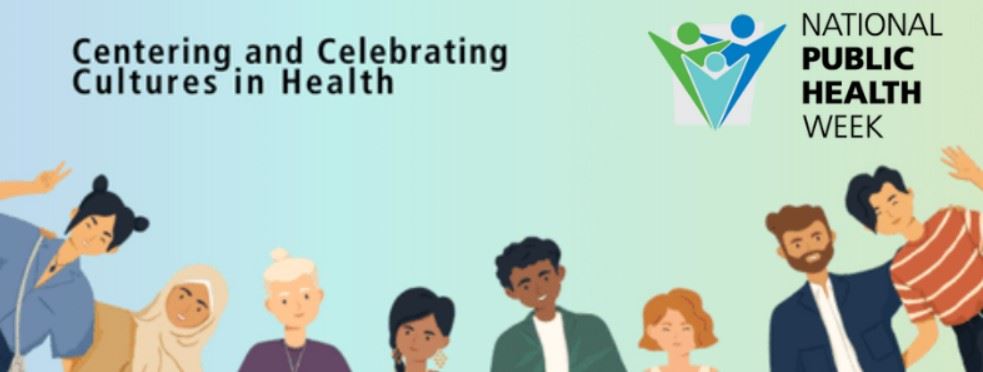
National Public Health Week (NPHW) is April 3 - 9, 2023!
Each day of NPHW focuses on a single public health topic that is crucial to moving forward and creating the healthiest nation and the state. Check out the Daily Fact Sheets below that were created by the American Public Health Association.
Vermont Gov. Phil Scott issued a proclamation that April 3- 9, 2023, was National Public Health Week in Vermont.
Each day a new fact sheet will be added so make sure to come back and visit!
Wednesday: Reproductive and Sexual Health
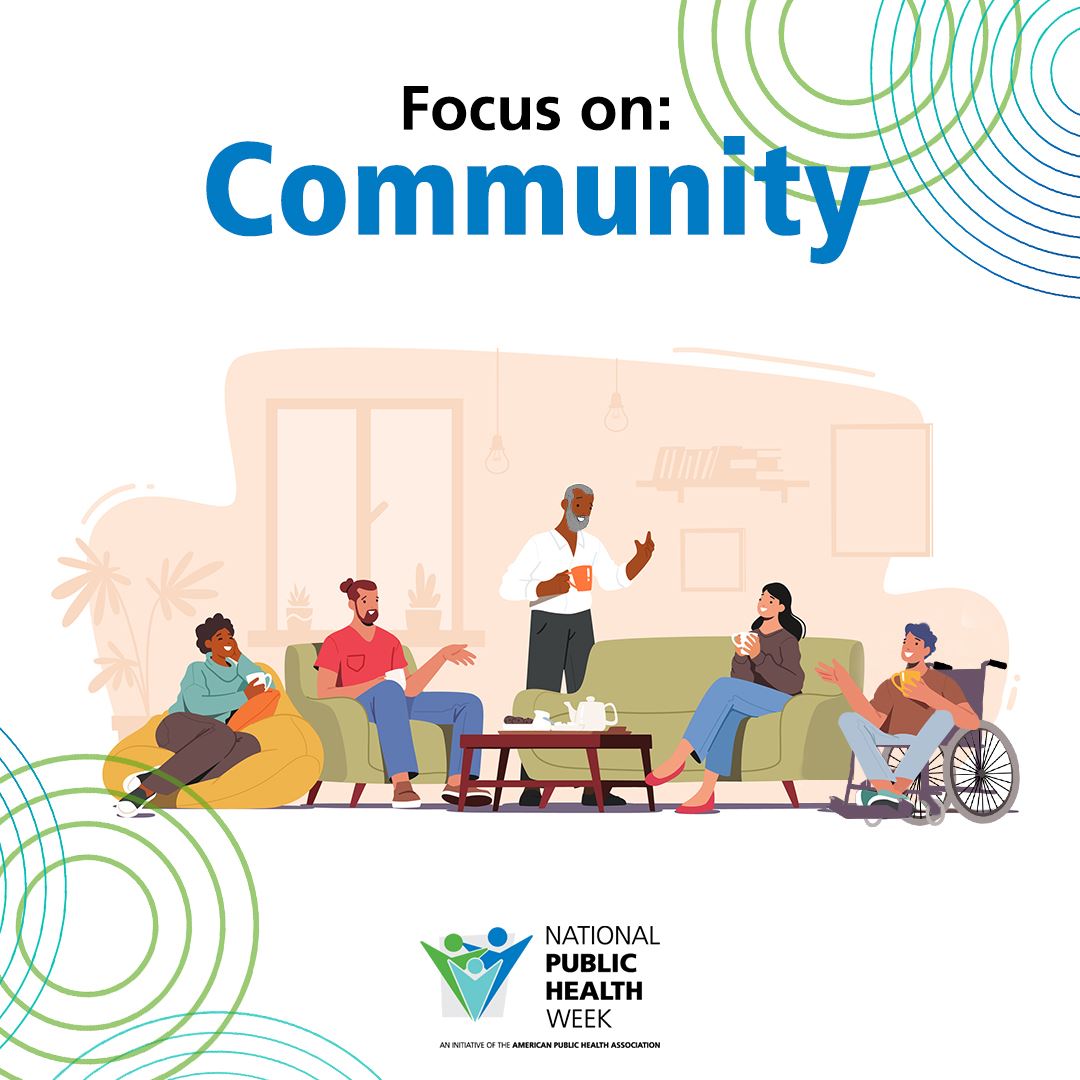
For science.
Community is where we are. It’s our connections with others who share similar interests, attitudes and goals. Over the past few years, those connections have been greatly impacted. Physically distancing from one another and limiting communal gatherings can lead to social isolation, increasing rates of depression, impaired immunity and premature mortality. These outcomes are even worse for and in communities marginalized due to their race, income, sexual orientation and gender identity. The political climate has also weakened the connections between communities. Debates over access to health care and funding strategies have distanced communities from one another. This makes communication and cooperation extremely difficult. There are also other conditions in our communities that impact our health and well-being called social determinants of health. People living just a few blocks apart may have very different life expectancies because of the safety of the neighborhood they live in or the quality of their schools. Transportation barriers and lack of health insurance can limit access to health services. This can increase the risk of harmful health behaviors like skipping medication or postponing care. Having to travel long distances to access nutritious foods is linked to food insecurity. This puts communities at higher risk for chronic conditions, such as heart disease, cancer and diabetes. There are also negative environmental health conditions like poor air quality that can result in cancer and lung and heart diseases.
For action.
Become more engaged or re-engage with your community and make an impact on public health. You can join a community garden, donate healthy and culturally appropriate canned food options to food pantries or volunteer at local food distributions. Join a recreational sports league or fitness group to engage in physical activity and to socially connect with others. Support community-led solutions by asking questions at public forums or joining a community advisory board. Get information on how your state uses public health funding. Advocate for your local elected officials to use funds to address health disparities. Encourage your local government to support healthy community design that includes parks, sidewalks and bike lanes. Tell them to fund programs to prevent unhealthy living conditions. Pursue community-engaged and multi-sector partnerships. Advocate for a health-in-all-policies approach as a strategy to improve community health. Engage your public health peers and elected officials on health topics on social media to gain more understanding about specific threats and to hold people in decision making roles accountable.
For health.
People with greater feelings of support, connection and inclusion within their networks may live longer, respond better to stress and have stronger immune systems than those who are isolated from their communities. However, research also shows that cross-sector efforts are needed to redesign the conditions of our social, built and natural environments to promote health equity and improve social determinants of health. The public health workforce should possess skills and knowledge that cut across disciplines in areas like policy, communications and data analytics. Neighborhood programs like community gardens not only improve access to nutritious foods, but they also cultivate social support and emotional well-being. Adding elements such as sidewalks, parks, libraries or bike routes to neighborhoods supports physical activity and decreases the negative health effects of air pollution. Local efforts must improve housing, education, food, transportation and the environment to support equity, resilience and health at the individual and community levels.
In celebration.
The White Earth Nation response to the COVID-19 pandemic incorporated cultural heritage and spiritual values while focusing on a vaccination campaign for their most at-risk members. Participation in traditional Greek dance sessions improves physical fitness and well-being of elderly adults. LGBTQ+ recreational sports leagues use physical activity to bring people together and connect with other members of their community. Omega Psi Phi Fraternity, Inc. created an online toolkit to help raise awareness and support for the mental health of Black men and their families. Peer-education programs about sexual heath and reproduction specifically.
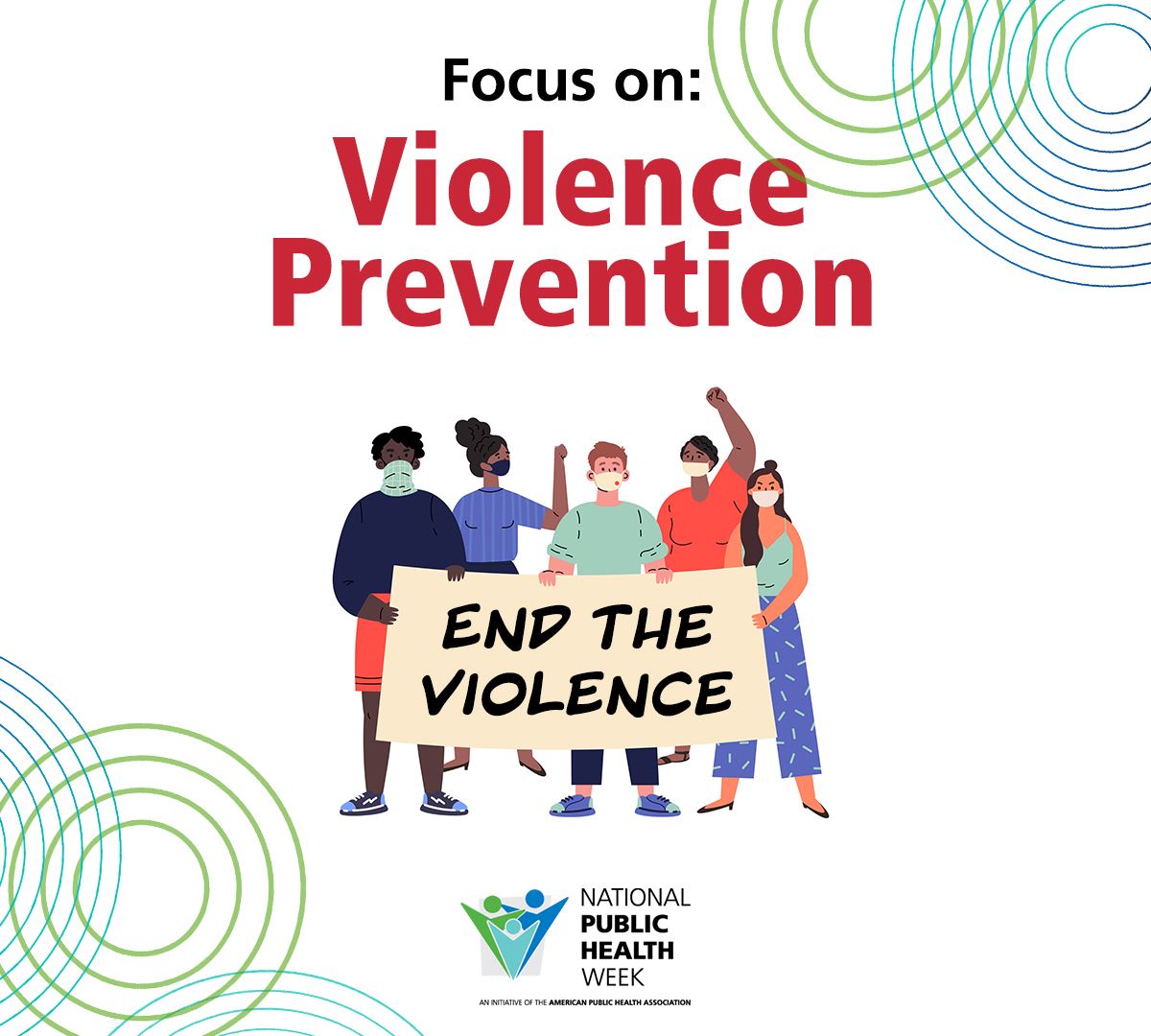
For science.
National data show gun-related deaths are on the rise: in 2020, the U.S. was home to 19,384 homicides and 24,292 suicides involving guns. Those numbers are the highest documented levels in a decade. About one in three women and one in four men experience some form of intimate partner violence, and one out of every four American women has been the victim of rape or attempted rape. In 2020, 618,000 victims of child abuse and neglect were reported to local officials. Not all communities face the same rates or kinds of violence. For example, Black people are two times more likely to be killed by police than their white counterparts.
For action.
Urge policymakers to provide research funding that's on par with the nation's gun violence epidemic and call on lawmakers to pass commonsense measures that reduce the risk of gun deaths and injuries. Work with local colleges and universities to prevent sexual violence and provide training on ways to better help victims of sexual violence, such as offering trauma-informed services. Learn about community-based strategies for creating the kinds of safe, stable and nurturing environments that help prevent child abuse and neglect. Advocate for community-driven solutions that identify and target the root of violence and don't criminalize entire communities.
For health.
Much more data is needed but research already shows commonsense gun safety laws can make a difference. Studies have shown that in the years following Connecticut's permit-to-purchase handgun law, firearm homicides decreased by 40%. Using public health-based interventions can make a difference in the reduction of violence. Home-visiting models have been shown to significantly reduce the risk of child maltreatment. Community-led models can be effectively used to implement violence prevention activities. For example, the innovative Cure Violence model, which applies the public health lens to violence prevention, has resulted in significant drops in local gun violence. Public health scientists also have identified highly cost-effective, citywide interventions to revitalize the places that people live, work and play, reducing gun violence, crime and fear in disadvantaged communities.
In celebration.
Culturally specific interventions are critical to effective violence prevention and reduction. For example, intimate partner violence or other controlling and abusive behaviors may be normalized in certain cultures due to taboos or patriarchal social norms. Culturally specific programs have reduced violence in those settings by implementing prevention strategies unique to those cultures. Culturally appropriate, tailored messaging around suicide prevention has been proven to help people reduce access to firearms in the rural U.S.
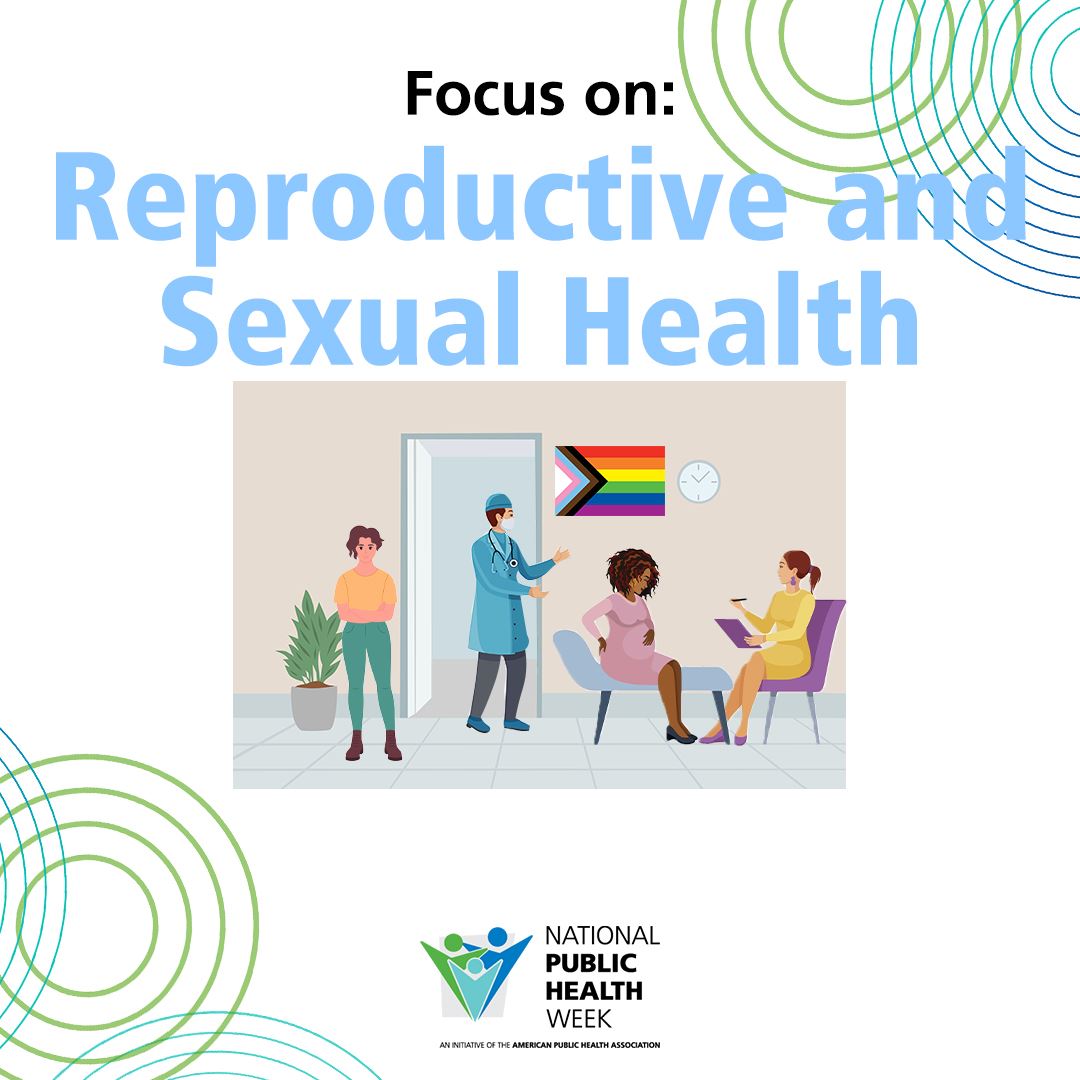
WEDNESDAY: REPRODUCTIVE HEALTH
For science.
When people receive quality reproductive and sexual health care, education and access, they can fulfill a happier and healthier life. In June 2022, the U.S. Supreme Court overturned Roe v. Wade, the decision that guaranteed the right to abortion in the U.S. Since the court’s decision, more than 30 states have severely restricted abortion access or banned it entirely. The lack of inclusive and accessible reproductive and sexual health care and education negatively affects everyone, but marginalized communities carry a greater burden of harm. Black women are three times more likely to die from a pregnancy-related cause than white women. In 2019, only 8.2 percent of students report receiving LGBTQ–inclusive sex education and only 19.4 percent of LGBTQ students were taught positive depictions of LGBTQ topics in their schools. Many health care facilities do not provide gender-affirming services. These biased practices put the LGBTQ community at a higher risk for sexually transmitted infections, depression and other negative health outcomes. We must recognize structural discrimination, biases and injustices which can block inclusive and accessible reproductive and sexual health care.
For action.
Urge your elected officials to protect access to the full spectrum of reproductive health care, including abortion. Support Black, Indigenous and other people of color reproductive justice organizations through actions like donating to SisterSong’s Birth Justice Care Fund, which provides BIPOC and queer people with pregnancy and postpartum support. Vote in federal, state and local elections for candidates and policies that center inclusive and accessible sexual and reproductive care. Advocate for sex education policymakers to create and execute culturally competent curricula that align with the LGBTQ+-inclusive Professional Learning Standards for Sex Education and National Sex Education Standards. Students can join school health advisory committees and speak to school administrators about the need for inclusive sex education. Promote increased distribution of HPV vaccines, pre-exposure prophylaxis for HIV and gender-affirming therapists and gynecologic care.
For health.
Women who receive a wanted abortion are more likely to be socioeconomically stable and less likely to stay in violent relationships compared to women who are denied wanted abortions. Students whose sex education expresses support for the LGBTQ+ community are less likely to report bullying based on sexual orientation and gender expression. An LGBTQ+-inclusive sex education curriculum and health care system can lead to a delay in the age of first-time sexual intercourse, reduce the overall number of sexual partners, increase use of contraception, reduce unintended teen pregnancy and reduce rates of teen HIV and other STIs within the LGBTQ+ community.
In celebration.
LBGTQ+ inclusive sex education has increased in several states. In 2022, the queer community recognized that mpox disproportionately affected men who have sex with men and took actions to protect themselves. They advocated for an increase in vaccine distribution and governmental action, declaring that a repeat of the governmental inaction, stigmatization and homophobia during the AIDs epidemic must not repeat itself. In the 2022 midterm election, voters approved ballot measures in California, Michigan and Vermont to protect state abortion rights and rejected amendments that would have further restricted abortion rights in Montana and Kentucky. Reproductive justice organizations are continuously hosting partnerships, trainings and educational programs to ensure everyone is able to choose when, if and how to have children, and to have the support they need to give birth to and raise children in a safe and healthy manner.

For science.
Mental health is important at every stage of life. It continuously affects how we think, feel and act. It also plays an important role in our physical and social well-being. In the U.S. alone, millions of Americans are affected by a mental illness. Anxiety disorders, bipolar disorders and depression are some of the most common. In fact, one in five U.S. adults experience mental illness each year. For minority populations, these rates are even higher. Indigenous people in America report experiencing psychological distress 2.5 times more than the general population over a month’s time. Transgender people are nearly four times as likely as cisgender people to experience a mental health condition. Cases of mental illness have recently risen due to the COVID-19 pandemic. Rates of anxiety, depression and substance use disorder have increased, particularly for communities of color. In fact, symptoms of depression were reported 59% more frequently by Hispanic adults than non-Hispanic white adults.
For action.
To make an impact on your community’s mental health and well-being, you can volunteer for a local mental health organization. Attend events, such as walks and fundraisers, that support the mental health movement. Ask Congress and local politicians to prioritize making mental health services available. Pledge to #Vote4MentalHealthand find out more about the connection between key policy issues and mental health. Learn about suicide prevention and intervention by joining the National Alliance on Mental Illness or APHA’s Mental Health Section. Use resources and toolkits to explore how to engage in conversations where mental health is viewed negatively. Collaborate with members of your community to locally shift policies and practices toward improving mental health conditions.
If you or someone you know need mental health services, contact the Substance Abuse and Mental Health Services Administration’s national helpline at 1-800-662-HELP. You can also call, text or chat 988 to connect with a trained counselor through the National Suicide Prevention Lifeline.
For health.
Practicing mindfulness, eating a well-balanced diet, engaging in physical exercise and getting a good night’s rest have been proven to help improve mental health. However, improving mental health for both ourselves and our communities requires an all-hands-on deck approach. Many communities across the nation are using American Rescue Plan funding to expand access to health services and invest in mental health. Community engagement can also better mental health and well-being by building a more connected and thriving community. For example, youth serve as important allies in promoting good mental health practices and reducing stigma. Community health workers help bridge gaps to build trust and connect people to the right care in their local communities. Building diverse partnerships with community organizations can also meet health needs that are tied directly to mental health, such as food security and access to care.
In celebration.
For Indigenous communities, having a connection to nature, family and others in the community are important factors in sustaining good mental health. Similarly, Latino culture heavily values the concept of family and these strong networks could be used to fight against mental health stigma. In the faith community, engaging in mediation/prayer, attending congregational gatherings or even volunteering has helped those with mental health conditions. National organizations have provided opportunities for minority groups to come together and celebrate mental health. For example, Mental Health America annually hosts BIPOC Mental Health Month in July to support Black, Indigenous and people of color in engaging in meaningful conversations about the BIPOC mental health experience. Pride Month, observed in June, also serves as a way for those in the LGBTQ+ community to attend events, share resources and engage in healing conversations around mental health.
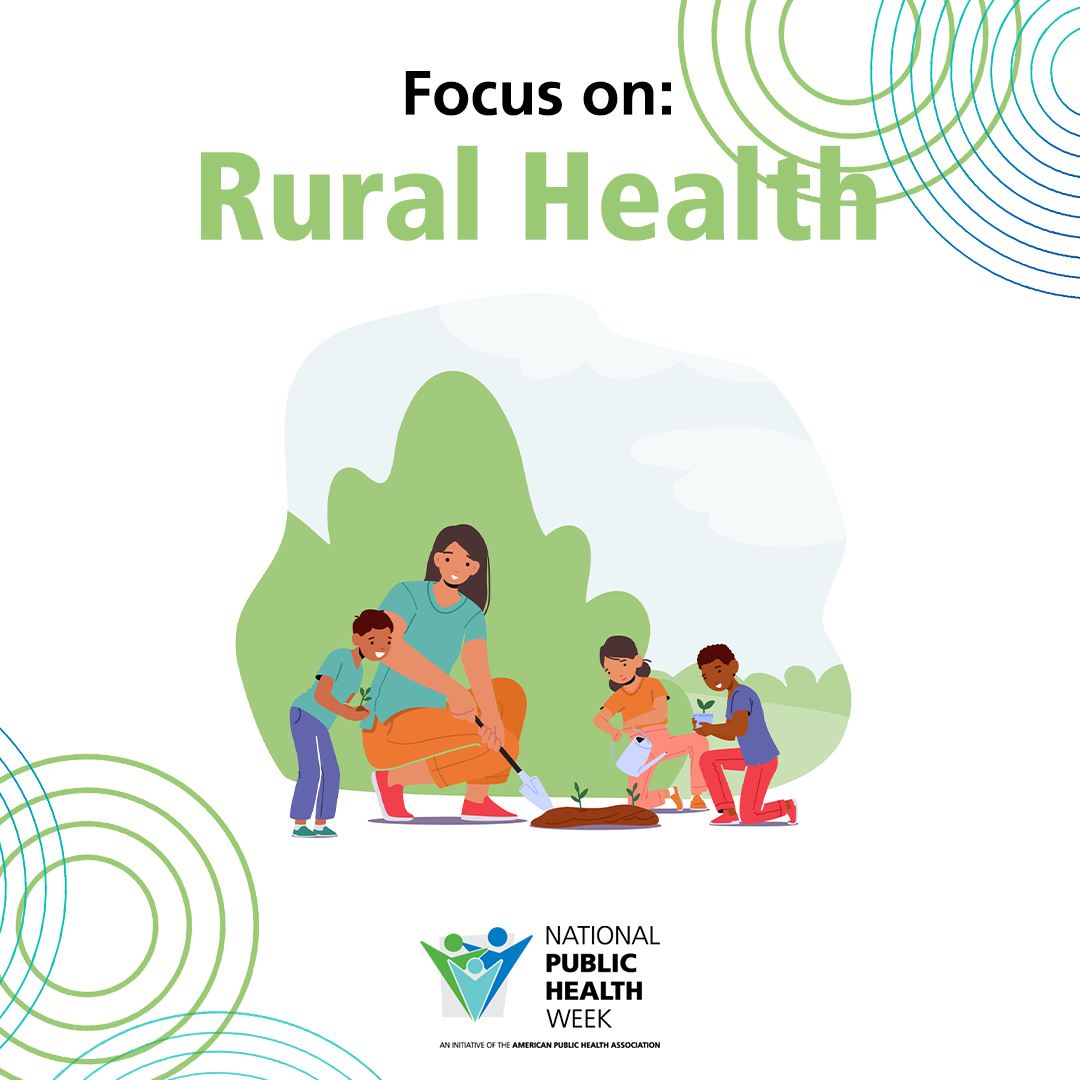
For science.
Fourteen percent of Americans live in rural areas. Rural Americans have higher rates of cigarette smoking, high blood pressure and diabetes. Compared to urban residents, they are at higher risk for poor health outcomes because of the range of health disparities they face. Racial/ethnic minorities and tribal groups are at higher risk for poor health outcomes, compared to non-Hispanic white adults. These health disparities include poverty, food deserts, also known as food apartheid, exposure to specific environmental hazards and less time for leisurely physical activity. People living in rural areas have less access to health care because of fewer providers and facilities and more transportation barriers. They are also not as likely to have health insurance. These factors play a part in the greater risk of death from heart disease, cancer, stroke, chronic lower respiratory disease and unintentional injury from motor vehicle crashes and opioid overdoses that rural residents face.
Children living in rural areas also face greater challenges with their development, mental health and behavioral health. Youth working on farms are at higher risk of injuries. They are 7.8 times more likely to die because of a work injury compared to youth in other jobs.
For action.
Improve mental and physical health and community involvement by creating activity programs and modifying local areas like parks and playgrounds and creating walking trails and protected bike lanes. Increase access to health facilities and other public resources by arranging transportation services using volunteer rideshare, public buses and scheduled vans. Provide mentoring, counseling, vocational training and college prep for underrepresented students. Advocate for easier access to and training and authorization of first responders to use naloxone. Push to expand medical school training to include skills to successfully practice in rural areas. Increase the availability of the internet to support telehealth services for more accessible healthcare. Work with federally qualified health centers that deliver care to all patients – with or without insurance.
For health.
There are effective strategies that have been tested in multiple studies and have worked in rural communities. School breakfast programs help reduce food insecurity and improve student diet, health and academic achievements. Research also shows that vocational training for adults and high school students help strengthent he health workforce available in rural communities and set residents on a path to succeed in and improve their communities. School-based health care and dropout prevention programs also help high school students achieve academic success. Increased access to naloxone and training to administer it can also bring a decrease in fatal opioid overdose rates.
In celebration.
Non-profits like Holler Health Justice have provided Appalachian Black, Indigenous and people of color with abortion funding and practical support as well as distributing N95 masks and units of hand sanitizer across West Virginia during the COVID-19 pandemic. The Alaska Native Tribal Health Consortium along with 10 Tribes and 10 Tribal health organizations offer Tribally-sponsored health insurance to qualifying Alaska Native and American Indian people, making medical care more financially accessible. For 10 years, Indigenous communities led the resistance against and fought hard to shut down the Keystone XL pipeline that threatened their communities’ safety, water supply and cultural resources. In January 2021, President Biden revoked the permit for the project, and by June 2021, TransCanada announced the termination of the project.
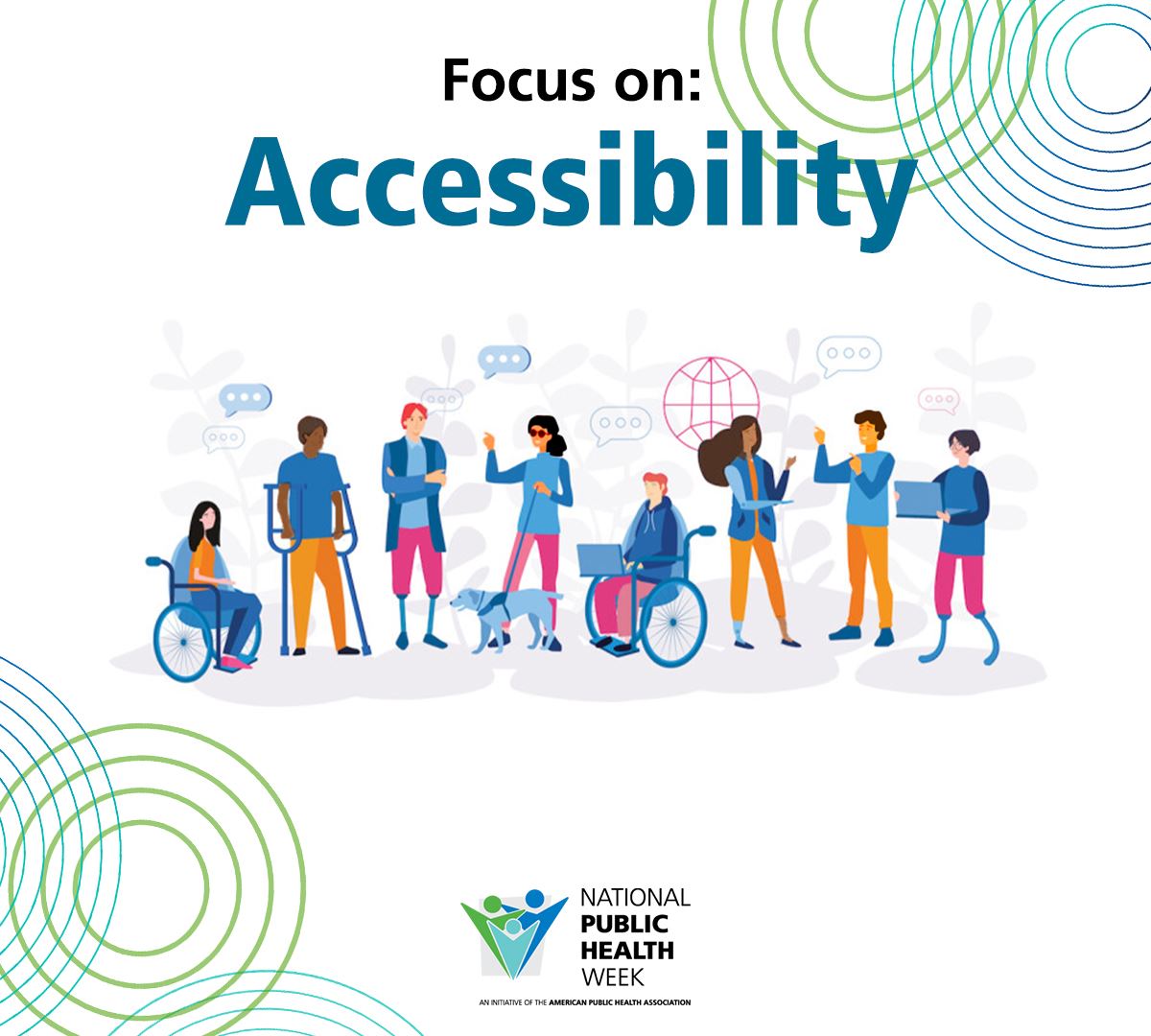
For science.
About 26% of U.S. adults have a disability, though Native Americans and senior citizens are disproportionately affected by disabilities. Adults with disabilities are also more likely to have heart disease, be smokers and have diabetes than the general population.
Black and African American people are projected to face more health effects from climate change when compared to other demographic groups. A warming of just 2 degrees Celsius (3.6 degrees Fahrenheit) will be impactful, with Black and African American individuals 34% more likely to live in communities projected to experience the highest increases in childhood asthma. They are also 40% more likely to live in areas with the highest-projected increases in deaths related to extreme temperatures. The effects of health on climate are also disproportionately felt by Hispanic populations, which are often more active in work that exposes them to weather, such as agriculture.
For action.
Doctors’ offices can provide health information and resources in multiple languages for people whose primary language is not English. Interpretation services may be used. In recognition of the need for more Spanish-language resources, APHA is making National Public Health Week fact sheets and shareables and our toolkit available in Spanish this year.
Urge your representatives in government to strengthen public health infrastructure to protect access to health care. Political decisions can affect climate change, which can limit access to food and clean water. Encourage representatives to support the Justice40 Initiative, a federal program working to secure at least 40% of climate and clean energy investment benefits for historically disadvantaged communities. You can also urge congressional representatives to ensure access to gender-affirming care for youth, which is in jeopardy in some states.
For health.
To move toward health equity, it’s critical we recognize that people with disabilities are facing health disparities. One in three adults with disabilities does not have a primary health care provider, and one in three adults with disabilities has unmet health care needs due to financial cost. Since the passing of the Affordable Care Act, uninsured rates have decreased. In 2008, 83.2% of people under the age of 65 reported having medical insurance, but by 2020, the percentage of people with insurance coverage was 91.4. Early intervention for hearing loss among young children is proven to help with their language development.
Improving access to nutritious food — particularly in areas with limited access to fresh produce — has been linked to improving overall health and eating habits. For example, when a mobile farmers market was introduced to a low-income community in Michigan in 2014, residents reported eating more fruits and vegetables since they were more accessible. The initiative has grown in the years since it was launched and five convenience stores in that neighborhood now provide fresh produce, with more collaborations being planned.
In celebration.
Section 504 of the Rehabilitation Act, signed into law in 1973, was the first federal civil rights protection for people with disabilities from discrimination. However, it wasn’t until 1977 that regulations were published and signed, spurred by the activism in 1977 of 504 sit-ins, peaceful demonstrations which underscored the demand for federal regulations to enforce Section 504. The longest 504 sit-in was held at the San Francisco federal building and lasting 26 days. Protests against the Dakota Access Pipeline, led by indigenous communities, secured the rights guaranteed to sovereign nations to their own reservation lands, protecting the health and safety of their communities. And after the fall of Roe v. Wade, voters in Michigan, Kentucky, California and Vermont ensured access to abortion care within their states. Efforts to protect care to essential health services were led by reproductive justice groups centering Black women – who are more likely to be harmed by abortion restrictions.
Even the wins that seem small are important. When a resident of a city in West Virginia requested the city council upgrade sidewalks to improve pedestrian and wheelchair access to nearby shopping, the city listened. In 2022 the state government recognized the need for access to transportation and awarded the same city more than $1 million in grant funding to improve sidewalks throughout the city.
For science. Structural racism limits the availability of nutritious food for marginalized groups. Black and Hispanic households are twice as likely to experience food insecurity as white households, and rates are even higher for Native American and Native Alaskan families. Discriminatory policies that cause food deserts, also known as food apartheid, limit grocery options in low-income areas, giving families fewer nutritious options and forcing them to travel farther to buy food. The most readily available foods are often ultra-processed products that are correlated with multiple health conditions. Researchers say the food industry is putting profit before people. Furthermore, climate change puts our global food supply at risk as an increase in severe weather threatens agriculture. Our current food systems are part of the problem, contributing at least a quarter of greenhouse gas emissions. For action. The federal government offers food safety net programs like the Supplemental Nutrition Assistance Program (SNAP), the Special Supplemental Nutrition Program for Women, Infants and Children (WIC) and free school meals, but many food-insecure families are ineligible because of income level, immigration status and other factors. Encourage your representatives in Congress to support legislation that expands eligibility for these programs. You can also provide input on the 2023 Farm Bill, which determines funding for SNAP. Contribute to your own community by volunteering with a food bank in your area, and while you’re at it, ask Congress to keep food banks fully funded. Get involved with grassroots advocacy by joining your local food policy council. For inspiration, read about how community leaders across the country are shaping policy through these councils. For health. Counter-marketing campaigns are proven to be a successful tactic in combating junk food marketing, along with promoting healthy food options at grocery and corner stores. In Baltimore, increasing access to low-sugar foods and beverages in stores, along with other interventions, led to healthier food purchasing. A San Francisco program that incentivized corner stores to increase space for produce and reduce space for tobacco and alcohol resulted in a 35% increase in produce sold. In Chicago, a medical center increased food access by launching an onsite, self-serve food pantry open 24/7 to reduce barriers and minimize stigma. For all interventions aimed at increasing food security, it is key to start with community engagement to build the trusting relationships that will lead to successful outcomes. In celebration. Communities facing food insecurity are taking action to ensure their neighbors not only have enough to eat, but also enough culturally appropriate foods. Mutual aid groups give structure to these grassroots movements. For example, the Queer Food Fund supports members of the Black queer and trans community affected by food insecurity. In New York, Star Route Farms grows produce such as black beans, cilantro and epazote to donate to Hispanic families through Bushwick Ayuda Mutua. In Chicago, Farm, Food, Familias provides meals that celebrate Mexican and Caribbean heritage to offer a taste of home to immigrant communities. On Oʻahu, Hawaiʻi, MAʻO Organic Farms preserves Native Hawaiian agriculture techniques and flavors to address food insecurity in a culturally sensitive and environmentally sustainable way.
|
About the associationVtPHA is a membership organization which facilitates collaboration among people who care about public health and are interested in protecting and promoting the health of Vermont residents.
| Contactadmin@vtpha.orgpha.org
Copyright © 2018 Vermont Public Health Association. All rights reserved.
|

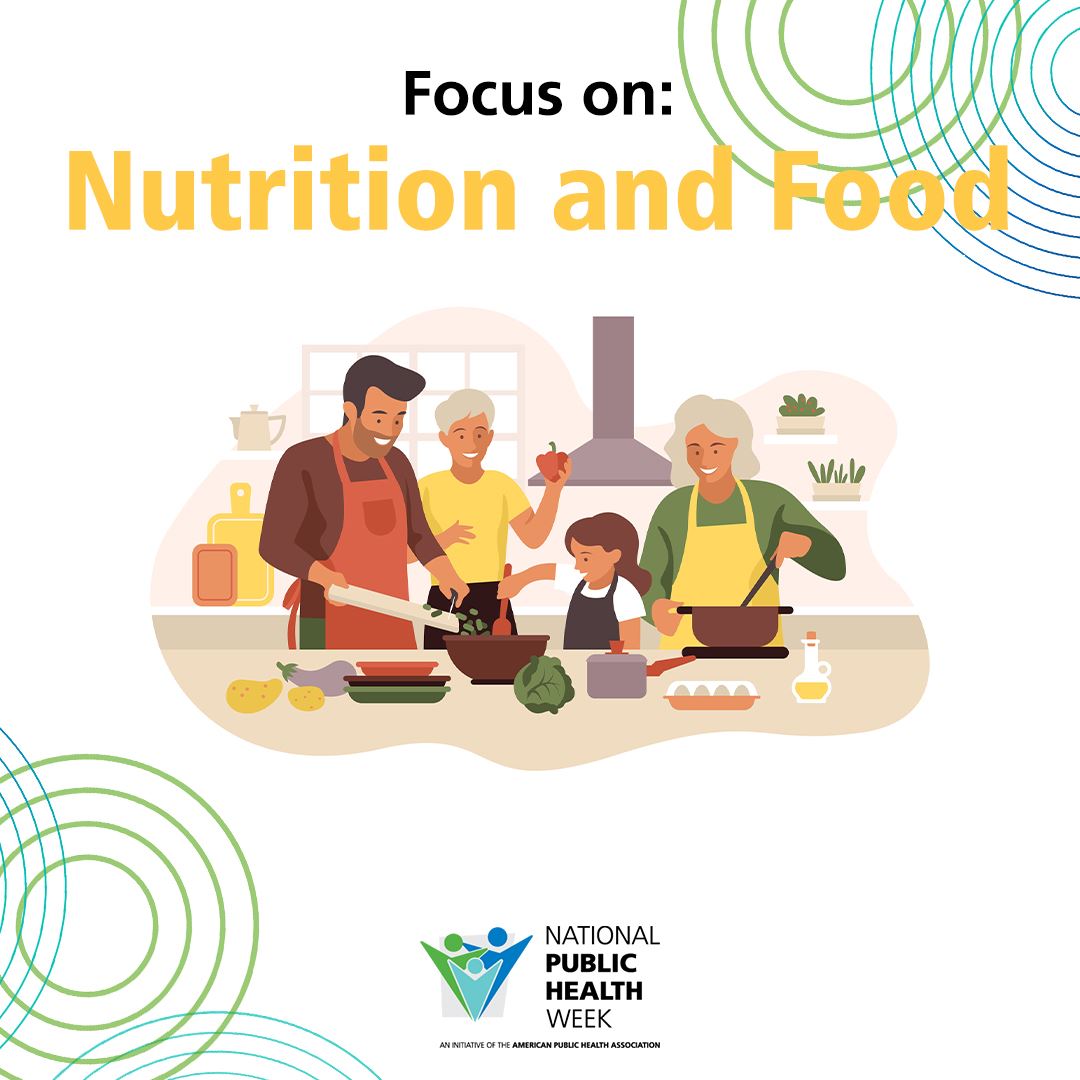
 VtPHA is an Affiliate of the American Public Health Association (APHA).
VtPHA is an Affiliate of the American Public Health Association (APHA).